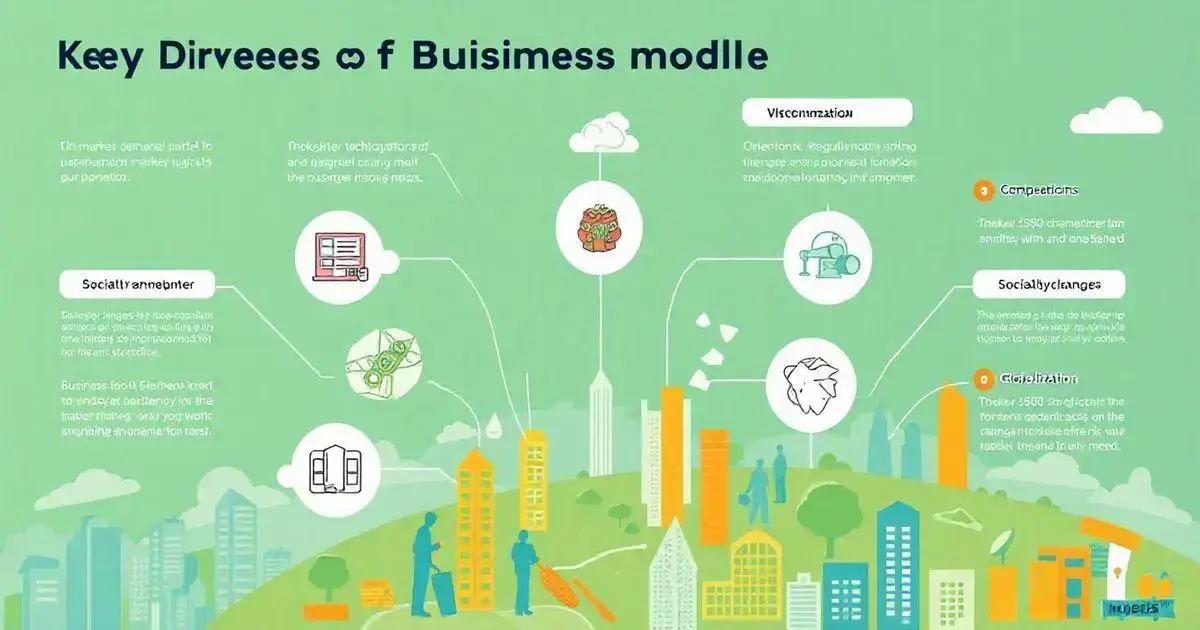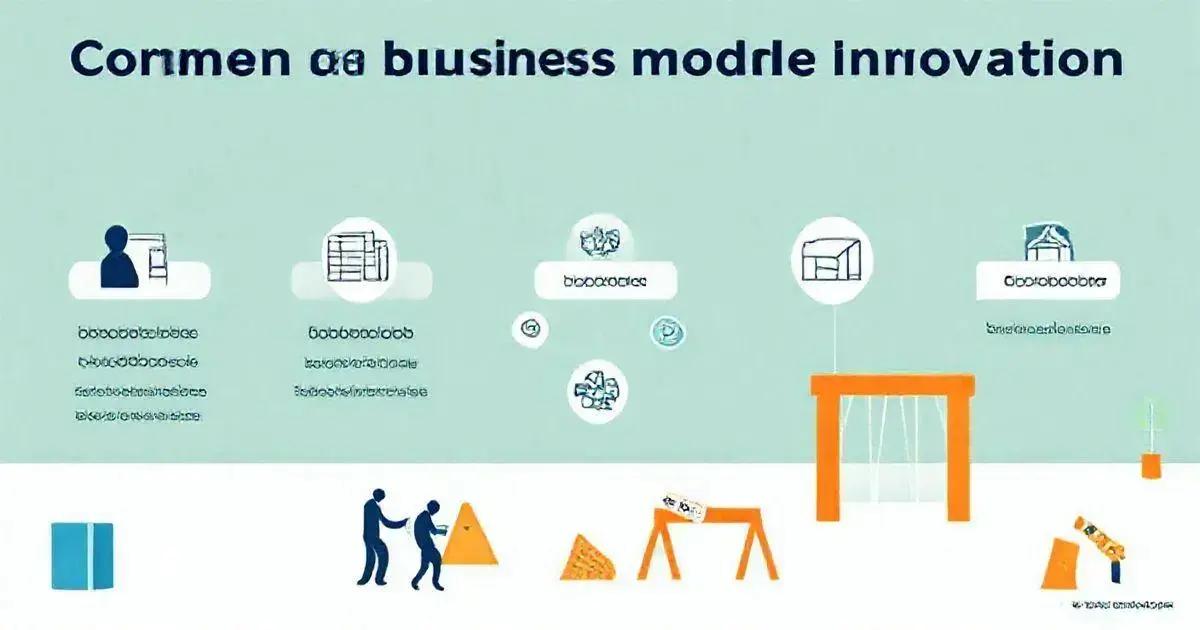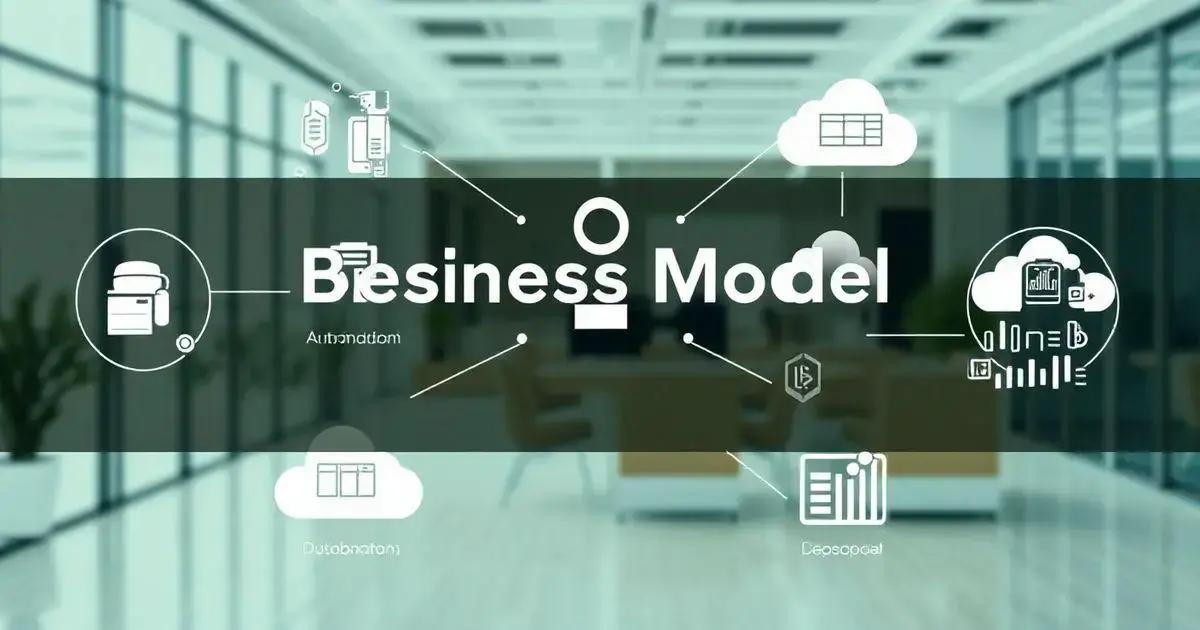Drive business model innovation requires understanding key drivers, leveraging technology, and fostering a culture of creativity. Businesses that embrace change can develop new ways to create, deliver, and capture value, ensuring long-term relevance in a competitive market. Overcoming challenges and utilizing tools like the Business Model Canvas help streamline the innovation process.
Successful business model innovation relies on measuring impact through KPIs, customer feedback, and continuous improvement. By aligning strategies with evolving customer needs, companies can enhance service delivery, optimize operations, and build stronger brand loyalty. Adapting to shifting market conditions ensures resilience and long-term profitability.
What are the most effective ways to drive business model innovation, and how can businesses implement transformative changes successfully? Exploring key strategies and real-world examples provides valuable insights for navigating this dynamic landscape.
Understanding Business Model Innovation
Understanding Drive Business Model Innovation is essential for businesses looking to thrive in an ever-changing marketplace. This concept focuses on developing new ways for companies to create, deliver, and capture value. By continuously evolving their strategies, businesses can Drive Business Model Innovation to stay competitive and meet shifting market demands.
What is Business Model Innovation?
Drive Business Model Innovation involves modifying the fundamental aspects of how a business operates. This includes rethinking product and service delivery, customer interactions, and revenue generation. Companies that embrace innovative approaches can uncover new opportunities and solve existing challenges more effectively.
Importance of Understanding Business Models
Every company operates under a business model, whether explicitly defined or not. By understanding their own models and analyzing competitors, businesses can spot emerging trends, identify growth avenues, and mitigate potential risks. Those who Drive Business Model Innovation can enhance efficiency, improve profitability, and maintain long-term relevance in their industry.
How can companies successfully Drive Business Model Innovation and stay ahead of market disruptions? Exploring key strategies and innovative approaches will provide valuable insights into building a sustainable and adaptive business model.
Key Drivers of Business Model Innovation

The key drivers of business model innovation are essential for companies seeking to innovate and respond effectively to changing market dynamics. Understanding these drivers helps businesses to identify areas ripe for transformation and to leverage their strengths.
Market Demands
One of the primary drivers of business model innovation is the shifting demands of consumers. As customer preferences evolve, companies must adapt their offerings to meet these new demands. This includes changing how products are delivered, as well as enhancing the customer experience.
Technological Advancements
The rapid pace of technological progress also acts as a significant driver of change. Innovations such as artificial intelligence, big data, and the Internet of Things create new opportunities for businesses to reshape their models and improve efficiency. Companies that embrace technology can gain a competitive edge.
Competitive Pressure
In increasingly crowded markets, competition compels businesses to innovate. To stay relevant, companies must continually assess their competitors’ offerings and strategies. This enables businesses to identify gaps in the market and to differentiate themselves through innovative approaches.
Regulatory Changes
Government regulations can drive business model innovation as companies are required to adapt to comply with new laws. Environmental policies, for example, may push companies to develop sustainable practices, leading to new business models that are environmentally friendly and profitable.
Globalisation
As businesses expand into global markets, they are often compelled to innovate their business models. Different cultural expectations, market sizes, and consumer behaviours require tailored approaches. Globalisation drives innovative thinking as organisations adapt to operate in diverse environments.
Societal Changes
Changes in societal values and demographics can lead to business model innovation. For instance, as millennials and Gen Z become influential consumers, brands are shifting toward sustainability and inclusivity in their business practices. Companies that tap into these values can create more appealing propositions.
Case Studies of Successful Innovations
Examining case studies of successful innovations provides valuable insights into how businesses can effectively implement new models. Here are some notable examples.
Netflix
Netflix started as a DVD rental service but transformed into a leading streaming platform. By recognising the shift in consumer preferences and leveraging technology, Netflix innovated its business model. It moved from lending physical DVDs to offering a subscription-based streaming service, providing convenience and a vast library of content for users.
Amazon
Amazon began as an online bookstore but has continually reinvented its business model. Innovations such as Amazon Prime, which offers member-exclusive benefits like free shipping and streaming services, have expanded its customer base. Furthermore, Amazon Web Services (AWS) showcases how a company can diversify its revenue by venturing into cloud computing, setting the stage for significant growth.
Airbnb
Airbnb disrupted the hospitality industry by introducing a platform that connects hosts with travellers. The company recognised the underutilised space in people’s homes and offered a solution that was more affordable and personalised. This innovative business model shifted perceptions of travel accommodations and created a global community.
Apple
Apple transformed its business model from hardware sales to a software and services ecosystem. Through innovations like the App Store and Apple Music, the company has built a recurring revenue model. This shift has allowed Apple to engage its customers deeply while fostering brand loyalty.
Uber
Uber revolutionised the transportation sector by introducing a ride-sharing app that connects drivers with passengers. Its innovative business model eliminates the need for traditional taxi services, providing convenient and cost-effective options for users. Uber’s approach shows how a tech platform can disrupt established industries.
Warby Parker
Warby Parker has changed the eyewear industry by offering affordable, stylish glasses online. Their home try-on program allows customers to experience the product before purchasing, enhancing customer satisfaction. Warby Parker’s innovative business model bypasses traditional retail, reducing costs while increasing accessibility.
Common Challenges in Business Model Innovation

In the journey of business model innovation, companies often encounter several challenges that can hinder their progress. Understanding these challenges can help businesses navigate obstacles effectively.
Resistance to Change
One common challenge is resistance to change within organisations. Employees may be accustomed to existing processes and may hesitate to adapt to new models. Overcoming this resistance requires effective communication, training, and showing the benefits of the change.
Short-Term Focus
An excessive focus on short-term results can obstruct innovation efforts. Companies may prioritize immediate profits over long-term growth through innovation. It is crucial to strike a balance between short-term goals and long-term vision.
Lack of Resources
Innovation often requires significant investment in time, money, and talent. Many businesses face budget constraints that limit their ability to pursue innovative ideas. Allocating resources strategically and seeking partnerships can help overcome this hurdle.
Insufficient Market Research
Not conducting adequate market research can lead to misguided innovations. Understanding customer needs, market trends, and competitive dynamics is essential. Lack of insights can result in the development of products or services that do not resonate with consumers.
Skill Gap
The skill gap in the workforce can impede innovation efforts. Companies may struggle to find employees with the necessary skills to implement new technologies or processes. Investing in employee training and hiring skilled professionals can help bridge this gap.
Regulatory Barriers
Regulations can pose challenges to innovation by limiting what businesses can do. Navigating complex legal requirements can slow down the implementation of new business models. Staying informed about regulations and actively engaging with policymakers can help mitigate these challenges.
The Role of Technology in Business Model Innovation

The role of technology in business model innovation is increasingly vital in today’s fast-paced marketplace. Technology enables businesses to rethink their operations and create new ways to deliver value to customers.
Enhancing Efficiency
Technology streamlines processes and increases efficiency. Automation tools reduce manual tasks, allowing employees to focus on strategic initiatives. For example, robotic process automation (RPA) can handle repetitive tasks, leading to quicker turnaround times and lower operational costs.
Improving Customer Experience
Innovative technologies like chatbots and AI-driven customer service platforms enhance customer interactions. These technologies provide instant support, personalise experiences, and gather data to improve services further. By leveraging technology, companies can foster stronger relationships with customers and retain their loyalty.
Data-Driven Decision Making
Access to real-time analytics helps businesses make informed decisions. By analysing customer data, market trends, and operational performance, companies can adapt their business models accordingly. This data-driven approach enables firms to identify opportunities for innovation and growth.
Facilitating Collaboration
Cloud-based collaboration tools enhance teamwork within organisations. These platforms allow employees to communicate and share ideas seamlessly, regardless of location. Enhanced collaboration fosters a culture of innovation, as diverse insights contribute to effective business model changes.
Scaling Operations
Technological advancements allow businesses to scale their operations more easily. Cloud computing, for instance, provides flexible resources that can grow with the business. This scalability is crucial for organisations aiming to innovate and expand their offerings without significant upfront investment.
Innovating Products and Services
Technology enables the development of new products and services that meet changing consumer needs. Businesses can use advanced technologies, such as AI and the Internet of Things (IoT), to create smart products that enhance functionality and user experience. This shifts traditional value propositions and opens new revenue streams.
Driving Business Model Innovation
Drive Business Model Innovation is essential for organizations aiming to stay competitive in today’s dynamic market. By identifying key innovation drivers, leveraging technology, and fostering a culture that encourages creativity, businesses can Drive Business Model Innovation to unlock new growth opportunities and strengthen their market position.
The case studies highlighted demonstrate that successful transformations require overcoming common challenges and utilizing the right tools. Companies that actively Drive Business Model Innovation can optimize their processes, enhance customer experiences, and create new revenue streams. Measuring success through KPIs, customer feedback, and financial analysis ensures continuous improvement and scalability.
Ultimately, businesses that embrace and Drive Business Model Innovation can adapt to changing customer needs and evolving market conditions. Understanding how to implement strategic innovation is key to long-term sustainability and success.
Check out our article on Small Business to explore tips and strategies for growing and managing your business successfully.
